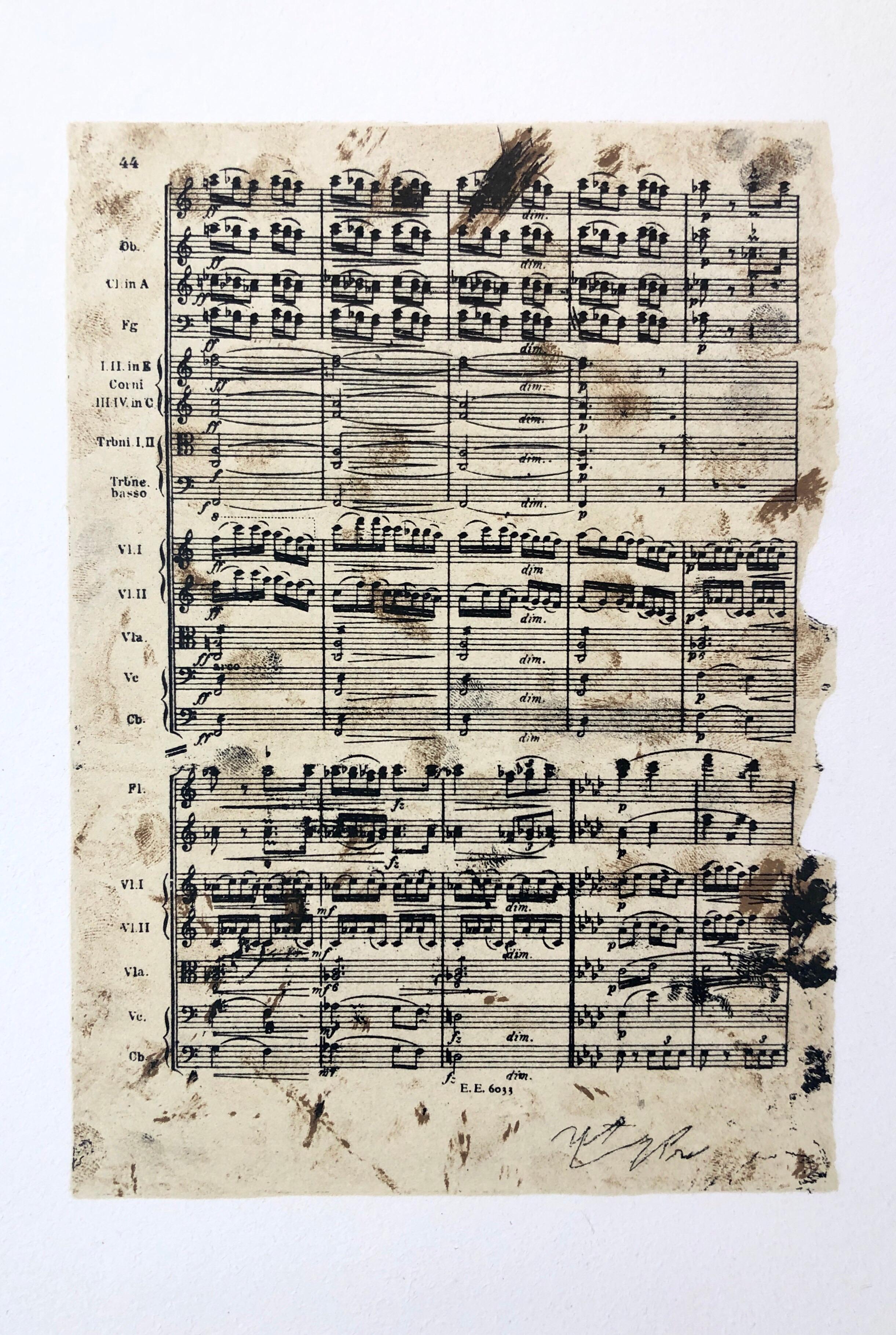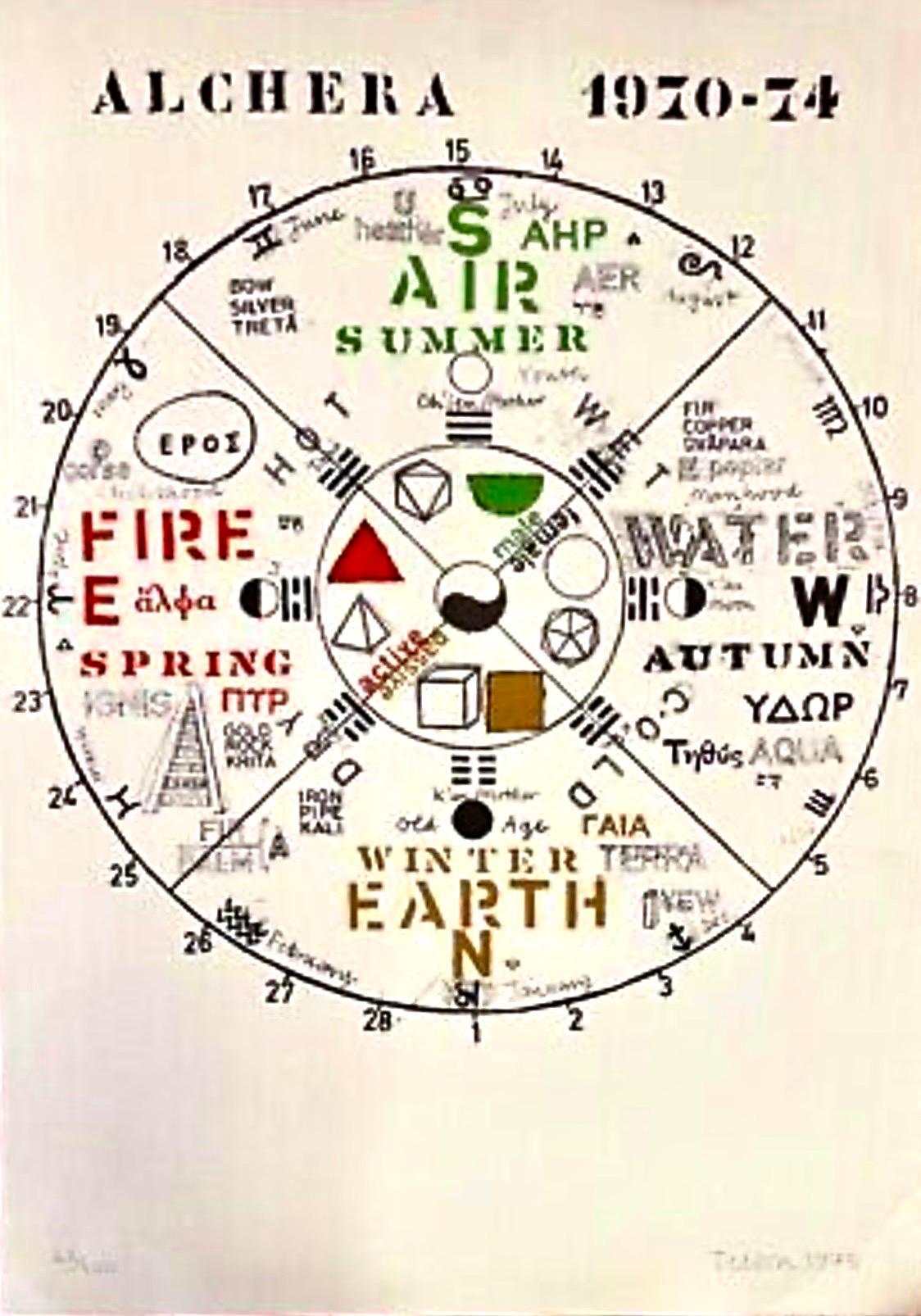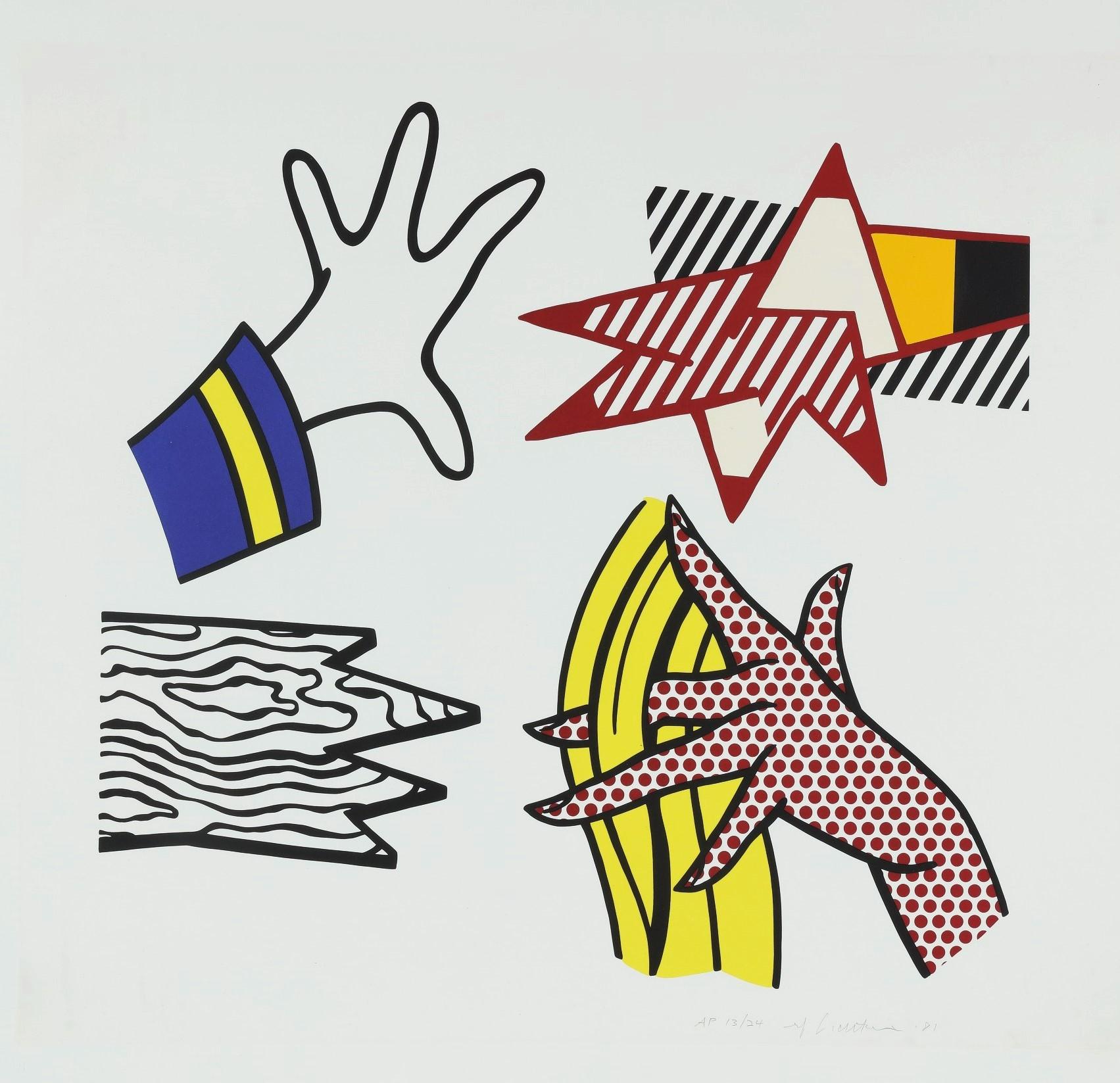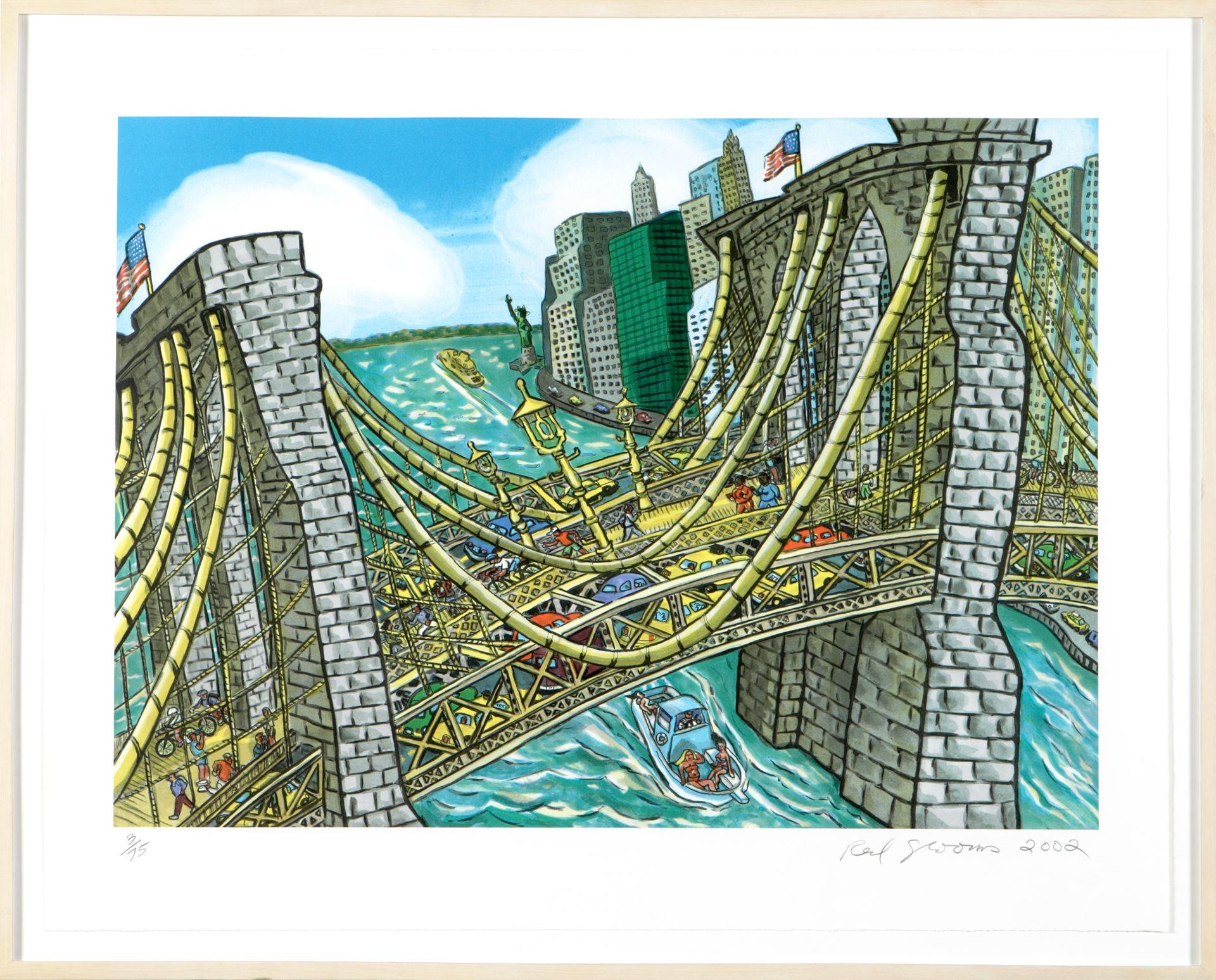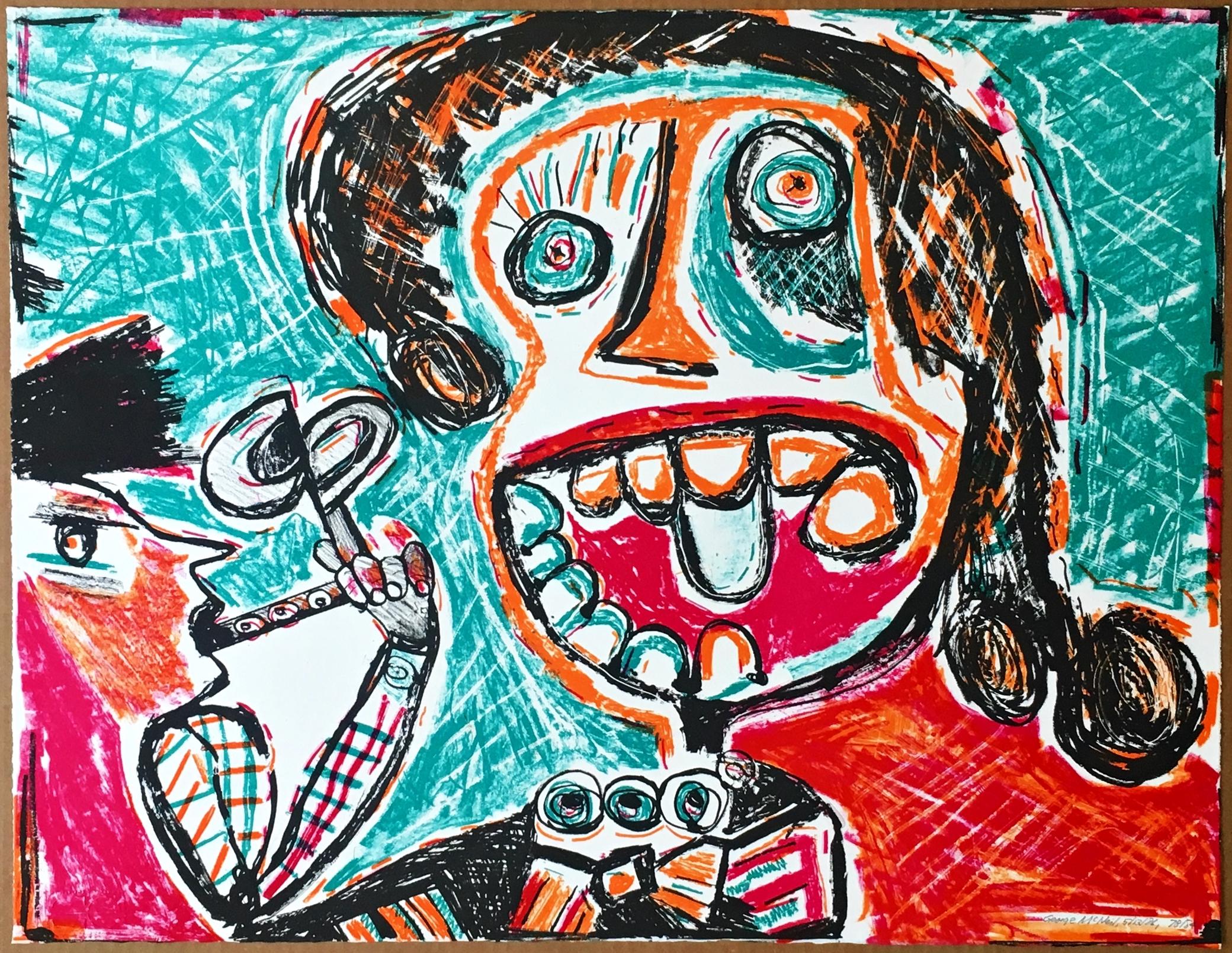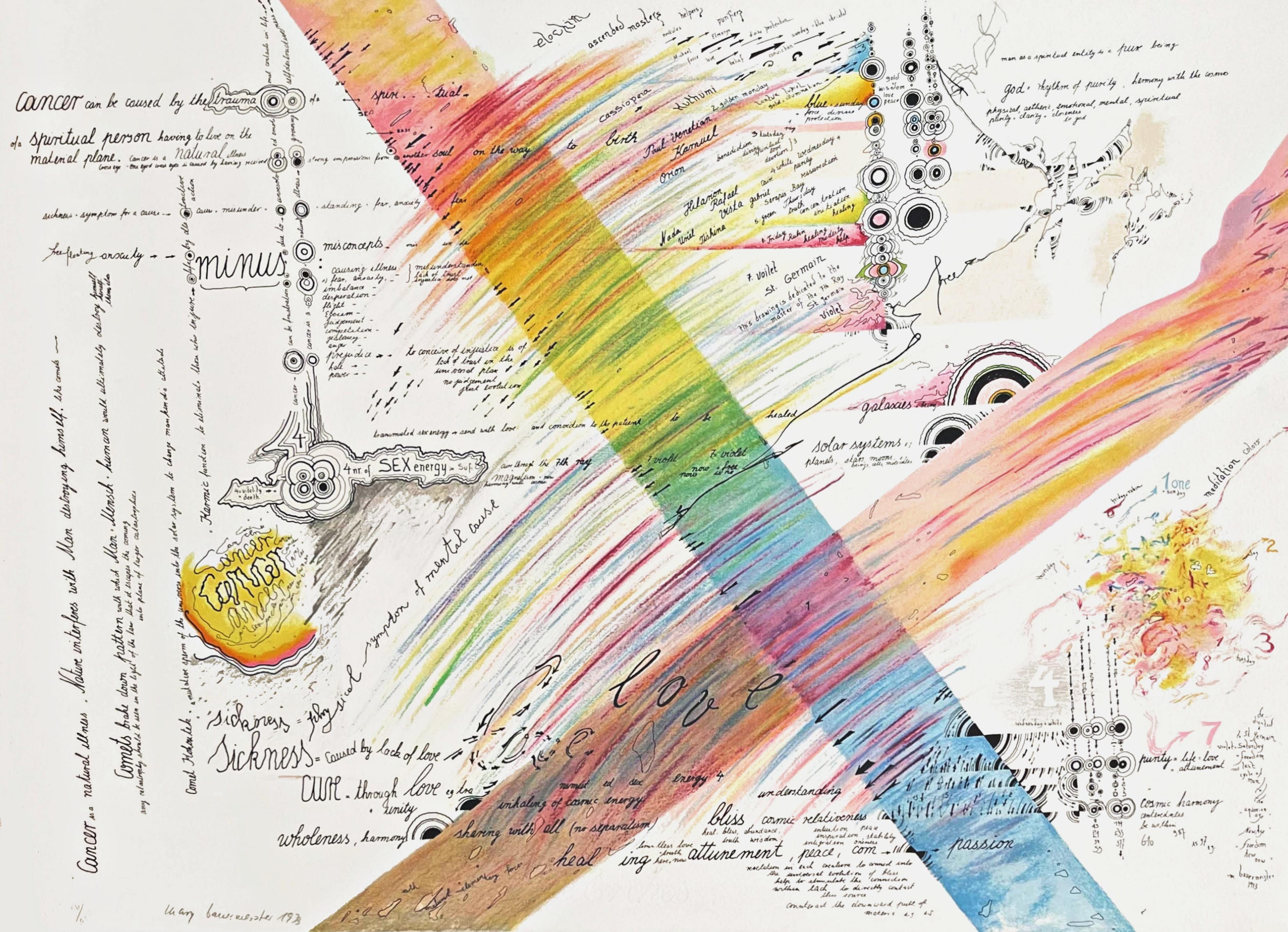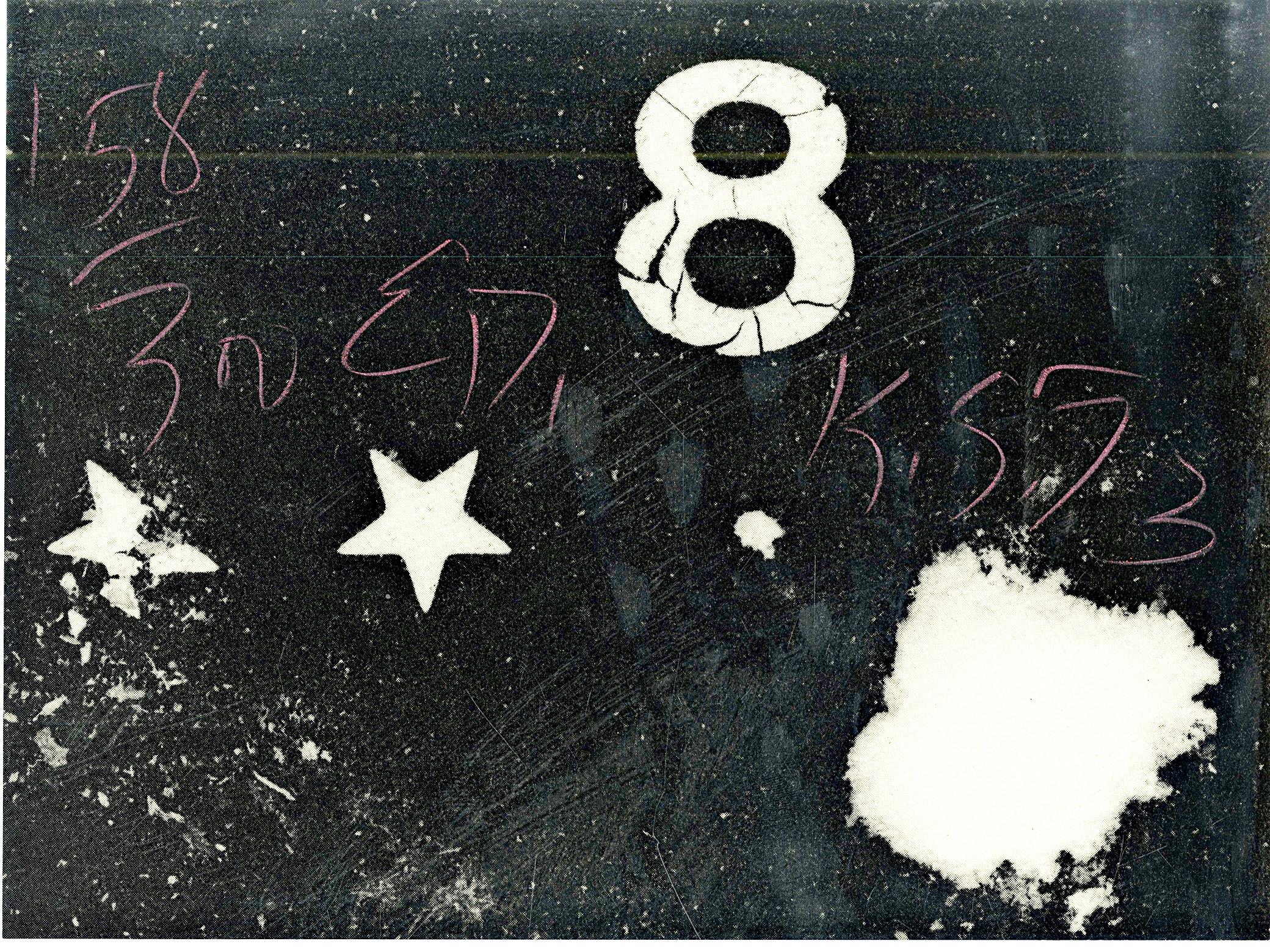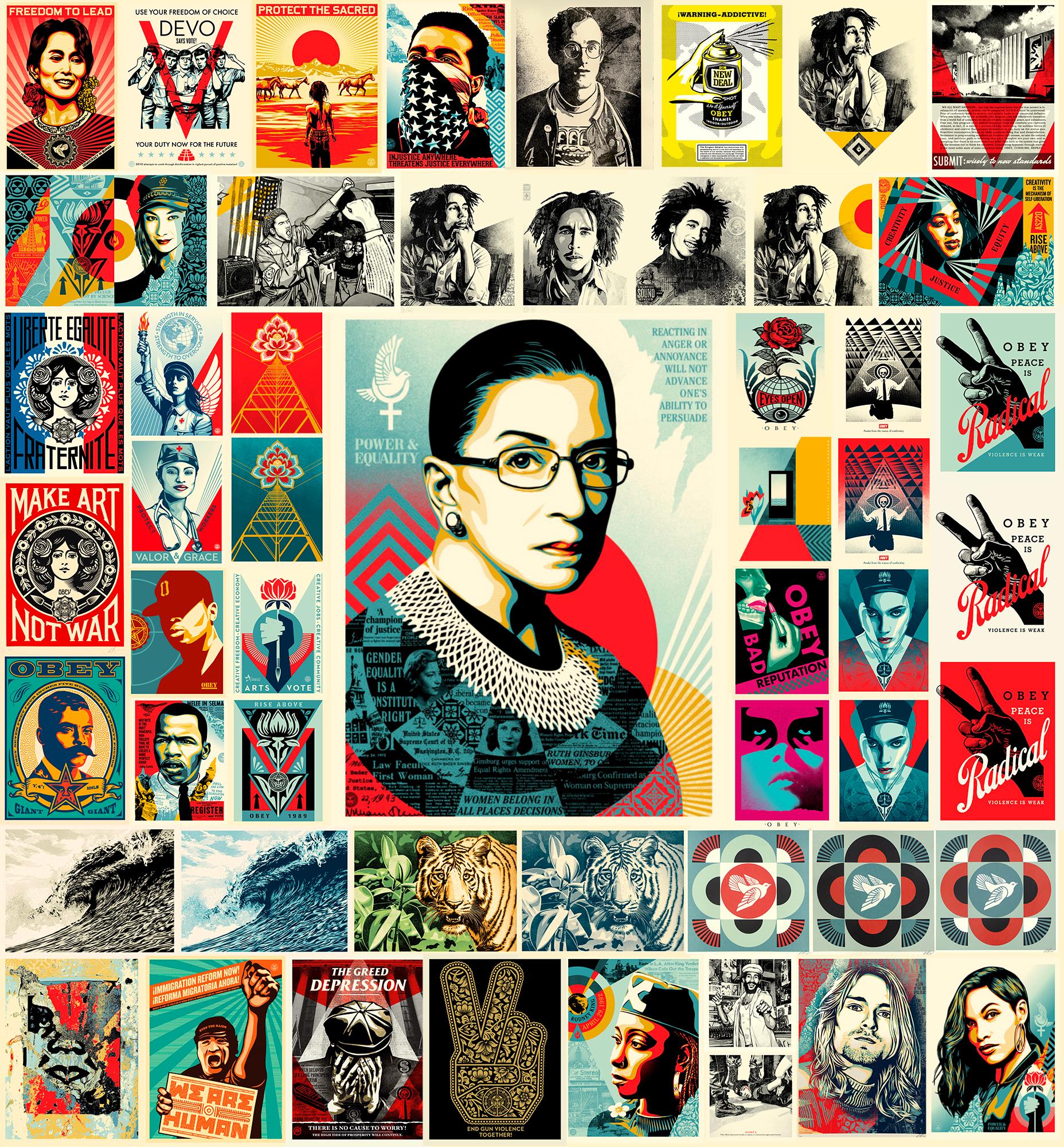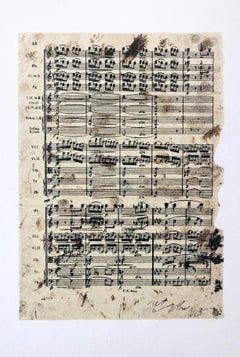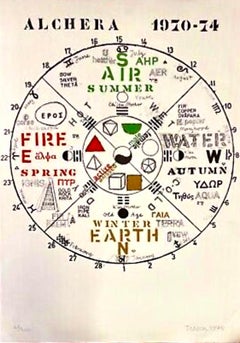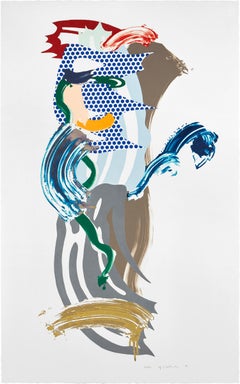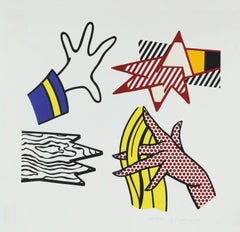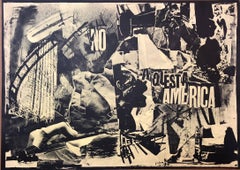
Italian Abstract Collage 'No a Questa America' Large Screenprint Hand Signed
View Similar Items
Emilio VedovaItalian Abstract Collage 'No a Questa America' Large Screenprint Hand Signed1968
1968
About the Item
- Creator:Emilio Vedova (1916 - 2006, Italian)
- Creation Year:1968
- Dimensions:Height: 24 in (60.96 cm)Width: 34 in (86.36 cm)
- Medium:
- Movement & Style:
- Period:
- Condition:minor wear.
- Gallery Location:Surfside, FL
- Reference Number:1stDibs: LU3822873103
Emilio Vedova
Emilio Vedova was a self-taught artist, he joined the Milanese anti-Fascist artists’ association, Corrente. In 1946, in Milan, he collaborated with Morlotti on the manifesto “Oltre Guernica” and was a founding member of the Fronte Nuovo delle Arti from 1946–50 in Venice. In 1952, Vedova participated in the Gruppo degli Otto Pittori Italiani and exhibited at the Venice Biennale. Vedova was also the Italian representative at the first Documenta in 1955 and won a Guggenheim International Award in 1956. In 1959, he exhibited his large L-shaped canvases Scontro di situazioni, in an environment created by Carlo Scarpa. Vedova was awarded the Grand Prize for painting at the 1960 Venice Biennale. After the late 1970s, he experimented with a variety of techniques and formats such as the mobile works on steel rails. In 1995, he began a new series of multifaceted and manipulable painted objects called Disk-Multiple (Disco-Plurimo).
- Elettra, Music Score Lithograph Jannis Kounellis Arte Povera Italian Avant GardeBy Jannis KounellisLocated in Surfside, FLIt depicts a musical score or music notes. Offset Lithography on rag paper hand signed lower right in pencil: Kounellis numbered 37/90. Provenance: The Collection of Ileana Sonnabend...Category
1960s Arte Povera Abstract Prints
MaterialsLithograph
- Modernist Figurative Pop Art Etching and Aquatint "the Artist" Michael MazurBy Michael MazurLocated in Surfside, FLMichael Mazur "The Artist" Hand signed and editioned from the edition of 50 1967 Michael Burton Mazur (1935-August 18, 2009) was an American artist who was described by William Grimes of The New York Times as "a restlessly inventive printmaker, painter, and sculptor." Born and raised in New York City, Mazur attended the Horace Mann School. He received a bachelor's degree from Amherst College in 1958, then studied art at Yale. Mazur first gained notice for his series of lithographs and etchings of inmates in a mental asylum, which resulted in two publications, "Closed Ward" and "Locked Ward." Over the years, he worked in printmaking and painting. His series of large-scale prints for Dante's Inferno won critical acclaim, and were the subject of a traveling exhibition organized by the University of Iowa in 1994. Later he concentrated on creating large, lyrical paintings which make use of his free, gestural brushwork and a varied palette. Some of these paintings were seen in an exhibition of 2002 at Boston University, "Looking East: Brice Marden, Michael Mazur, and Pat Steir." (See also Susan Danly, "Branching: The Art of Michael Mazur," 1997). The Museum of Fine Arts, Boston, has acquired a definMichael Mazur received a B.A. from Amherst College in 1957, studying in his senior year at the Accademia di Belle Arti in Florence, Italy. He went on to earn both a B.F.A. and an M.F.A. from the Yale School of Art and Architecture in 1961. Mazur's first teaching job was at the Rhode Island School of Design from 1961 to 1964. He was awarded a Guggenheim Foundation fellowship for 1964–65. From 1965 to 1976, he taught at Brandeis University, and from 1976 to 1978 at Harvard University. As an artist, teacher, and writer, Mazur has been active in reviving the monotype process. He contributed an essay to the pioneering exhibition catalogue The Painterly Print, published by the Metropolitan Museum of Art in 1980. Mazur recently chaired the New Provincetown Print...Category
Early 2000s American Modern Abstract Prints
MaterialsLithograph, Screen
- Joe Tilson British Pop Art Screenprint, Color Lithograph 4 Seasons 4 ElementsBy Joe TilsonLocated in Surfside, FLSilkscreen screenprint or Lithograph Hand signed and numbered. An esoteric, mystical, Kabbala inspired print with Hebrew as well as other languages. Joseph Charles Tilson RA (born 2...Category
1970s Pop Art Abstract Prints
MaterialsLithograph, Screen
- Judy Rifka Abstract Expressionist Contemporary Lithograph Hebrew 10 CommandmentBy Judy RifkaLocated in Surfside, FLJudy Rifka (American, b. 1945) 44/84 Lithograph on paper titled "Thou Shalt Not Bear False Witness against Thy Neighbor"; Depicting an abstract composition in blue, green, red and black tones with Hebrew script. Judaica interest. (I have seen this print described as a screenprint and as a lithograph) Hand signed in pencil and dated alongside an embossed pictorial blindstamp of a closed hand with one raised index finger. Solo Press. From The Ten Commandments Kenny Scharf; Joseph Nechvatal; Gretchen Bender; April Gornik; Robert Kushner; Nancy Spero; Vito Acconci; Jane Dickson; Judy Rifka; Richard Bosman and Lisa Liebmann. Judy Rifka (born 1945) is an American woman artist active since the 1970s as a painter and video artist. She works heavily in New York City's Tribeca and Lower East Side and has associated with movements coming out of the area in the 1970s and 1980s such as Colab and the East Village, Manhattan art scene. A video artist, book artist and abstract painter, Rifka is a multi-faceted artist who has worked in a variety of media in addition to her painting and printmaking. She was born in 1945 in New York City and studied art at Hunter College, the New York Studio School and the Skowhegan School of Painting and Sculpture in Maine. Rifka took part in the 1980 Times Square Show, (Organized by Collaborative Projects, Inc. in 1980 at what was once a massage parlor, with now-famous participants such as Jenny Holzer, Nan Goldin, Keith Haring, Kenny Scharf, Jean-Michel Basquiat, and Kiki Smith, the roster of the exhibition reads like a who’s who of the art world), two Whitney Museum Biennials (1975, 1983), Documenta 7, Just Another Asshole (1981), curated by Carlo McCormick and received the cover of Art in America in 1984 for her series, "Architecture," which employed the three-dimensional stretchers that she adopted in exhibitions dating to 1982; in a 1985 review in the New York Times, Vivien Raynor noted Rifka's shift to large paintings of the female nude, which also employed the three-dimensional stretchers. In a 1985 episode of Miami Vice, Bianca Jagger played a character attacked in front of Rifka's three-dimensional nude still-life, "Bacchanaal", which was on display at the Museum of Art Fort Lauderdale. Rene Ricard wrote about Rifka in his influential December 1987 Art Forum article about the iconic identity of artists from Van Gogh to Jean-Michel Basquiat and Keith Haring, The Radiant Child.The untitled acrylic painting on plywood, in the collection of the Honolulu Museum of Art, demonstrates the artist's use of plywood as a substrate for painting. Artist and writer Mark Bloch called her work "imaginative surfaces that support experimental laboratories for interferences in sensuous pigment." According to artist and curator Greg de la Haba, Judy Rifka's irregular polygons on plywood "are among the most important paintings of the decade". In 2013, Rifka's daily posts on Facebook garnered a large social media audience for her imaginative "selfies," erudite friendly comments, and widely attended solo and group exhibitions, Judy Rifka's pop art figuration is noted for its nervous line and frenetic pace. In the January 1998 issue of Art in America, Vincent Carducci echoed Masheck, “Rifka reworks the neo-classical and the pop, setting all sources in quotation for today’s art-world cognoscenti.” Rifka, along with artists like David Wojnarowicz, helped to take Pop sensibility into a milieu that incorporated politics and high art into Postmodernism; Robert Pincus-Witten stated in his 1988 essay, Corinthian Crackerjacks & Passing Go that "Rifka’s commitment to process and discovery, doctrine with Abstract Expressionist practice, is of paramount concern though there is nothing dogmatic or pious about Rifka’s use of method. Playful rapidity and delight in discovery is everywhere evident in her painting." In 2016, a large retrospective of Rifka's art was shown at the Jean-Paul Najar Foundation in Dubai. In 2017, Gregory de la Haba presented a Rifka retrospective at the Amstel Gallery in The Yard, a section of Manhattan described as "a labyrinth of small cubicles, conference rooms and small office spaces that are rented out to young entrepreneurs, professionals and hipsters". In 2019 her video Bubble Dancers New Space Ritual was selected for the International Istanbul Bienali. Alexandra Goldman Talks To Judy Rifka About Ionic Ironic: Mythos from the '80s at CORE:Club and the Inexistence of "Feminist Art" Whitehot Magazine of Contemporary Art. She was included in "50 Contemporary Women Artists", a book comprising a refined selection of current and impactful artists. The foreword is by Elizabeth Sackler of the Brooklyn Museum’s Sackler Center for Feminist Art. Additional names in the book include sculptor and carver Barbara Segal...Category
1980s Pop Art Abstract Prints
MaterialsLithograph, Screen
- Deborah Kass Feminist Jewish American Pop Art Silkscreen Screenprint Ltd EditionBy Deborah KassLocated in Surfside, FLDeborah Kass (born 1952) Limited edition geometric abstract lithograph in colors on artist paper. Hand signed and dated in pencil to lower right. 1973. Edition: 102/120 to lower left. Dimensions: sight: 16-3/4" W x 21-1/4" H. Frame: 24-5/8" W x 28-7/8" H. Finding inspiration in pop culture, political realities, film, Yiddish, art historical styles, and prominent art world figures, Deborah Kass uses appropriation in her work to explore notions of identity, politics, and her own cultural interests. She received her BFA in painting at Carnegie Mellon University and studied at the Whitney Museum Independent Study Program and the Art Students League of New York. Deborah Kass (born 1952) is an American artist whose work explores the intersection of pop culture, art history, and the construction of self. Deborah Kass works in mixed media, and is most recognized for her paintings, prints, photography, sculptures and neon lighting installations. Kass's early work mimics and reworks signature styles of iconic male artists of the 20th century including Frank Stella, Andy Warhol, Jackson Pollock, and Ed Ruscha. Kass's technique of appropriation is a critical commentary on the intersection of social power relations, identity politics, and the historically dominant position of male artists in the art world. Deborah Kass was born in 1952 in San Antonio, Texas. Her grandparents were from Belarus and Ukraine, first generation Jewish immigrants to New York. Kass's parents were from the Bronx and Queens, New York. Her father did two years in the U.S. Air Force on base in San Antonio until the family returned to the suburbs of Long Island, New York, where Kass grew up. Kass’s mother was a substitute teacher at the Rockville Centre public schools and her father was a dentist and amateur jazz musician. At age 14, Kass began taking drawing classes at The Art Students League in New York City which she funded with money she made babysitting. In the afternoons, she would go to theater on and off Broadway, often sneaking for the second act. During her high school years, she would take her time in the city to visit the Museum of Modern Art, where she would be exposed to the works of post-war artists like Frank Stella and Willem De Kooning. At age 17, Stella’s retrospective exhibition inspired Kass to become an artist as she observed and understood the logic in his progression of works and the motivation behind his creative decisions. Kass received her BFA in Painting at Carnegie Mellon University (the alma mater of artist Andy Warhol), and studied at the Whitney Museum Independent Study Program Here, she created her first work of appropriation, Ophelia’s Death After Delacroix, a six by eight foot rendition of a small sketch by the French Romantic artist, Eugène Delacroix. At the same time Neo-Expressionism was being helmed by white men in the late Reagan years, women were just beginning to create a stake in the game for critical works. “The Photo Girls...Category
2010s Pop Art Figurative Prints
MaterialsScreen
- El Herido, 1960's Spanish Avant Garde Political Screenprint Lithograph SignedBy Rafael CanogarLocated in Surfside, FLThe Wounded One (El Herido) from Violence (La Violencia) 1969 signed, dated and titled in pencil Dimensions: sheet: 22 1/16 x 30 1/16" (56 x 76.4cm) Rafael Canogar ( Toledo , 1935) is a Spanish painter, one of the leading representatives of abstract art in Spain. Disciple of Daniel Vazquez Díaz (1948-1953), in his first works he found a way to reach the avant garde and, very soon, to study abstraction deeply. He initially used a sculpture technique: with his hands he scratched or squeezed the paste that vibrated on flat colored backgrounds. It was a painting in which the initial gesture comes directly from the heart. At this point, Canogar embodied the best of painting material . In 1957 he founded with other artists the EI Paso group. With artists like Luis Feito, Manolo Millares, Pablo Serrano, Manuel Rivera and Antonio Saura, he begins the Spanish avant-garde movement and continues to do so until 1960. It is influenced by Action painting. They defended, between 1957 and 1960 , an informal aesthetic and the opening of Franco Spain...Category
1960s Modern Abstract Prints
MaterialsScreen
- Blue Face from the Brushstroke Figures SeriesBy Roy LichtensteinLocated in Miami, FLLithograph, waxtype woodcut and screenprint on 638-g/m cold-pressed Saunders Waterford Paper. From the "Brushstroke Figures" series, 1989. Hand signed rf Lichtenstein, dated ('89) a...Category
1980s Contemporary Abstract Prints
MaterialsLithograph, Screen, Woodcut
- Study of HandsBy Roy LichtensteinLocated in New York, NYCreated in 1981 as an original lithograph with screen-printing, Roy Lichtenstein’s, Study of Hands is hand-signed in pencil, dated and numbered, measuring 31 ¼ x 32 ¾ in. (79.5 x 83....Category
20th Century Pop Art Figurative Prints
MaterialsLithograph, Screen
Price Upon Request - Study of HandsBy Roy LichtensteinLocated in Miami, FLHand signed rf Lichtenstein and dated '81 in pencil lower right margin. Blindstamp lower left Washington University Printmaking Workshop chop. N...Category
1980s Contemporary Abstract Prints
MaterialsLithograph, Screen
- Red Grooms American Artist Original Hand Signed lithographBy Red GroomsLocated in Miami, FLAuthor: Red Grooms (United States, 1937) Title: 'Brooklyn bridge bustle', 2002 Medium: Print. Technique: Lithograph on paper Size Image: 22 x 30 in. (55 x 76 cm.) Size Sheet: 27 x 3...Category
Early 2000s Contemporary Abstract Prints
MaterialsPaper, Ink, Engraving, Aquatint, Lithograph, Screen
- Untitled Figure signed numbered mixed media print from scarce European portfolioBy George McNeilLocated in New York, NYGeorge McNeil Untitled Figure, 1986 Lithograph on paper. Publisher's and Printer's Blind Stamps Hand-signed, numbered 78/84 and dated by the artist on the front with publisher's and...Category
1980s Abstract Expressionist Figurative Prints
MaterialsLithograph, Pencil, Screen
- Rainbow Signed 1970s silkscreen & lithograph by pioneering female Fluxus artistBy Mary BauermeisterLocated in New York, NYMary Bauermeister Rainbow, 1973 Lithograph and silkscreen on creamy white paper Hand signed, dated and numbered 56/250 by the artist on the front 19 x 25.5 inches Unframed This work is on the permanent collection of various institutions like: Rice University, Samuel Dorksy Museum of Art, Rutgers Zimmerli Museum and Wheaton College Massachusetts. While studying the fringe sciences the 1970s, Bauermeister created Rainbow (1973), a lithograph and silkscreen. She uses a creamy white background as the base. Two intersecting diagonal bands of color transcend across the page, and black cursive lettering dances over the surface serving as a mind map of interweaving ideas. Through the central band, Bauermeister shifts through the color spectrum; she begins with red and finishes with violet. Inspired by music, she uses strokes of color that are rhythmically smeared across the lithograph. The surface lettering, a kind of visual poetry, explores her interest in human emotion and science. The viewer can see Bauermeister’s thoughts as they flow into one another through the use of words such as bliss, love, and healing. Bauermeister also includes a repetition of words such as cancer, sickness, and cure. The word cancer emerges from a cell-like shape. A careful study of the words shows that they may seem dark in nature; however, she juxtaposes these words against the cheerful title and colors. Perhaps the rainbow symbolizes a new hope, an inspiration for an optimistic future. -Courtesy to the Samuel Dorsky Museum of Art About Mary Bauermeister: A multidisciplinary artist known for her intricate and enigmatic assemblages, Mary Bauermeister (1934-2023) continues to defy categorization with layered works in a range of media. A precursory figure of the Fluxus movement—her studio was the meeting point for a number of defining artists of the avant-garde—her work plays an integral role in the discussion of art, both European and American, that emerged from the 1960s. Her reliefs and sculptures, which have incorporated drawing, text, found objects, natural materials and fabric, reference a plethora of concepts: from natural phenomena and astronomy to mathematics and language, as well as her own “spiritual-metaphysical experiences.” Maturing amidst the currents of Minimalism and Pop Art, Bauermeister’s art has resisted labels due to the singular expression of her interests and concerns, among them the simultaneous transience and permanence of the natural world with experimentations in transparency and magnification, multiplication and variation, structure and order, chance and ephemerality, introversion and extroversion. Her three-dimensional receptacles of thoughts, ideas, and notes contain visual, conceptual, and philosophical paradoxes that challenge perceptions and that offer literal and metaphorical windows into which one can glimpse the inner workings of the artist’s mind. - Courtesy of Michael Rosenfeld...Category
1970s Modern Abstract Prints
MaterialsLithograph, Screen, Mixed Media, Pencil, Graphite
